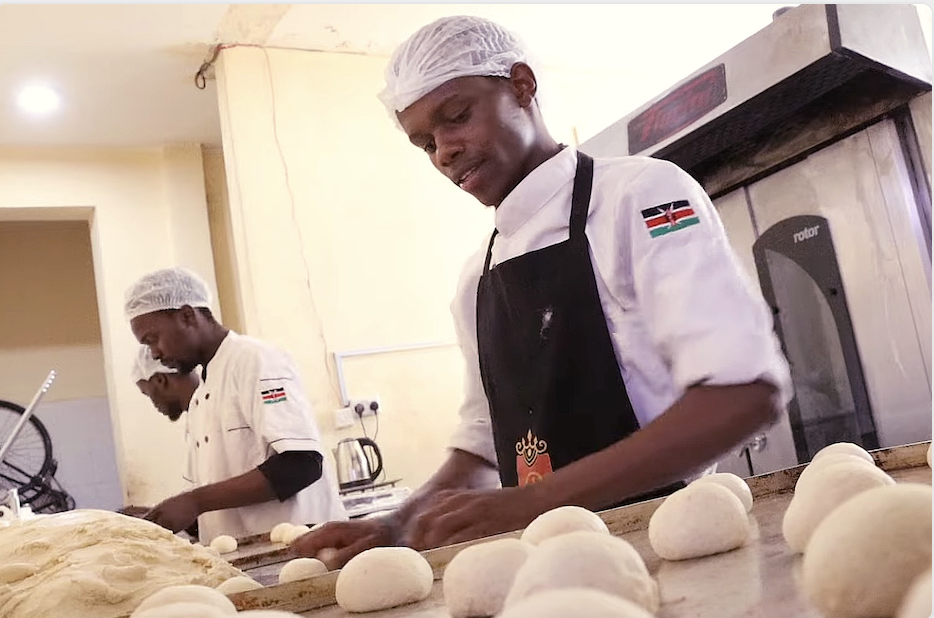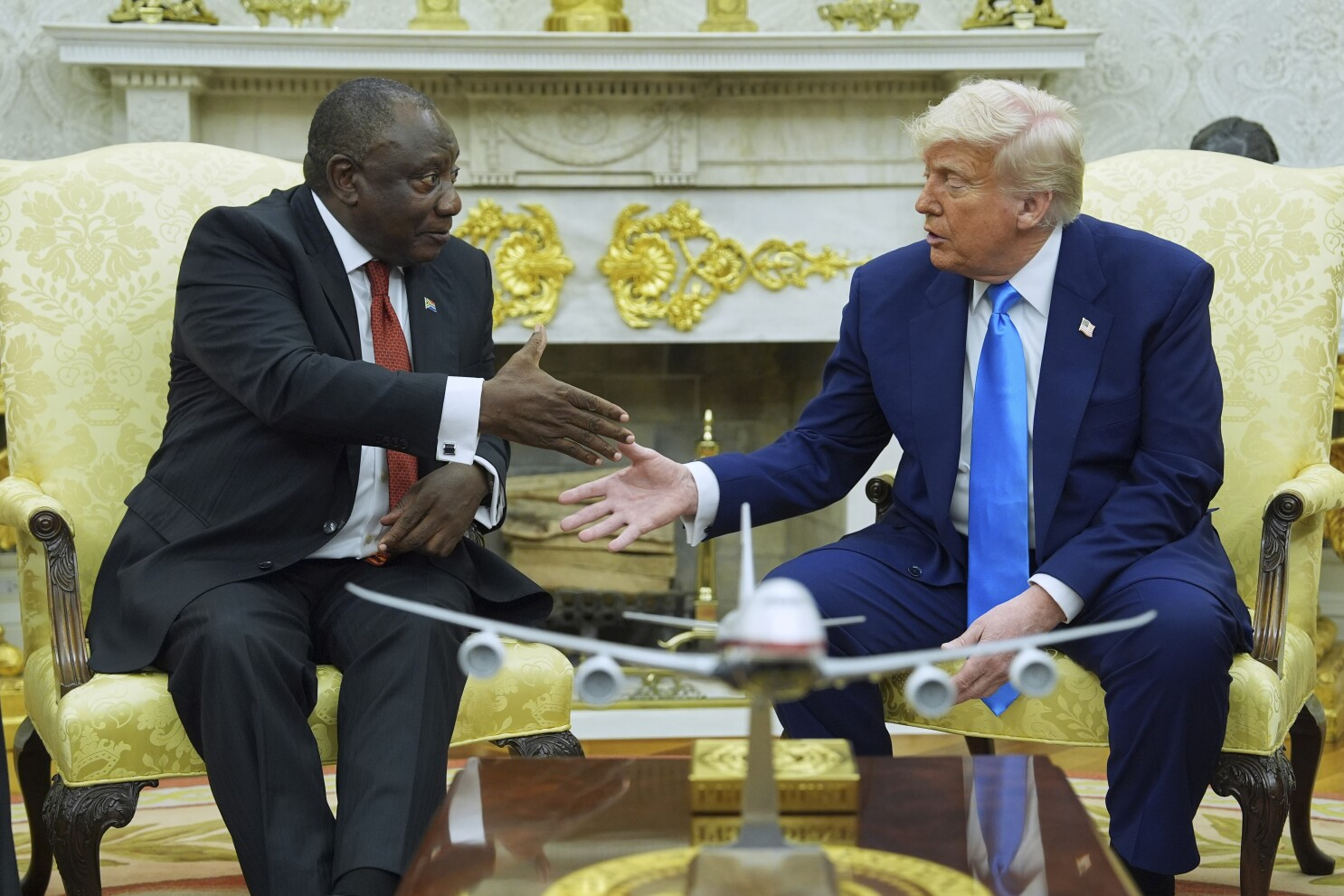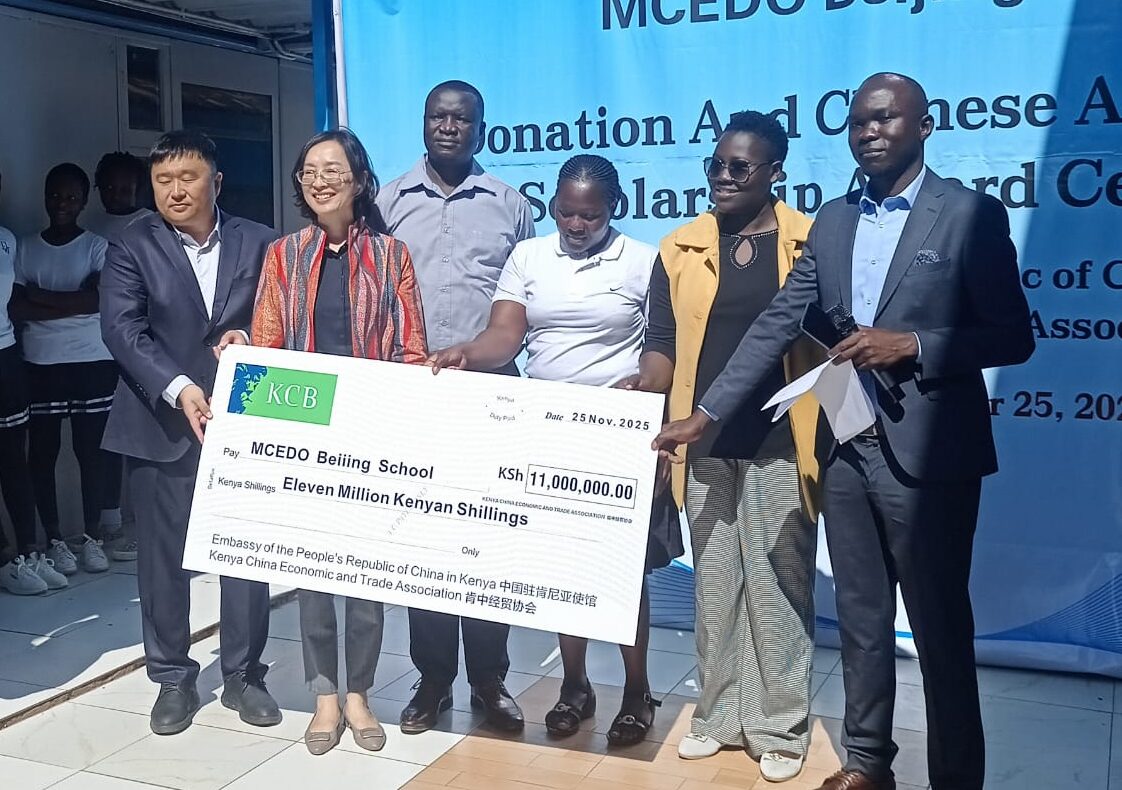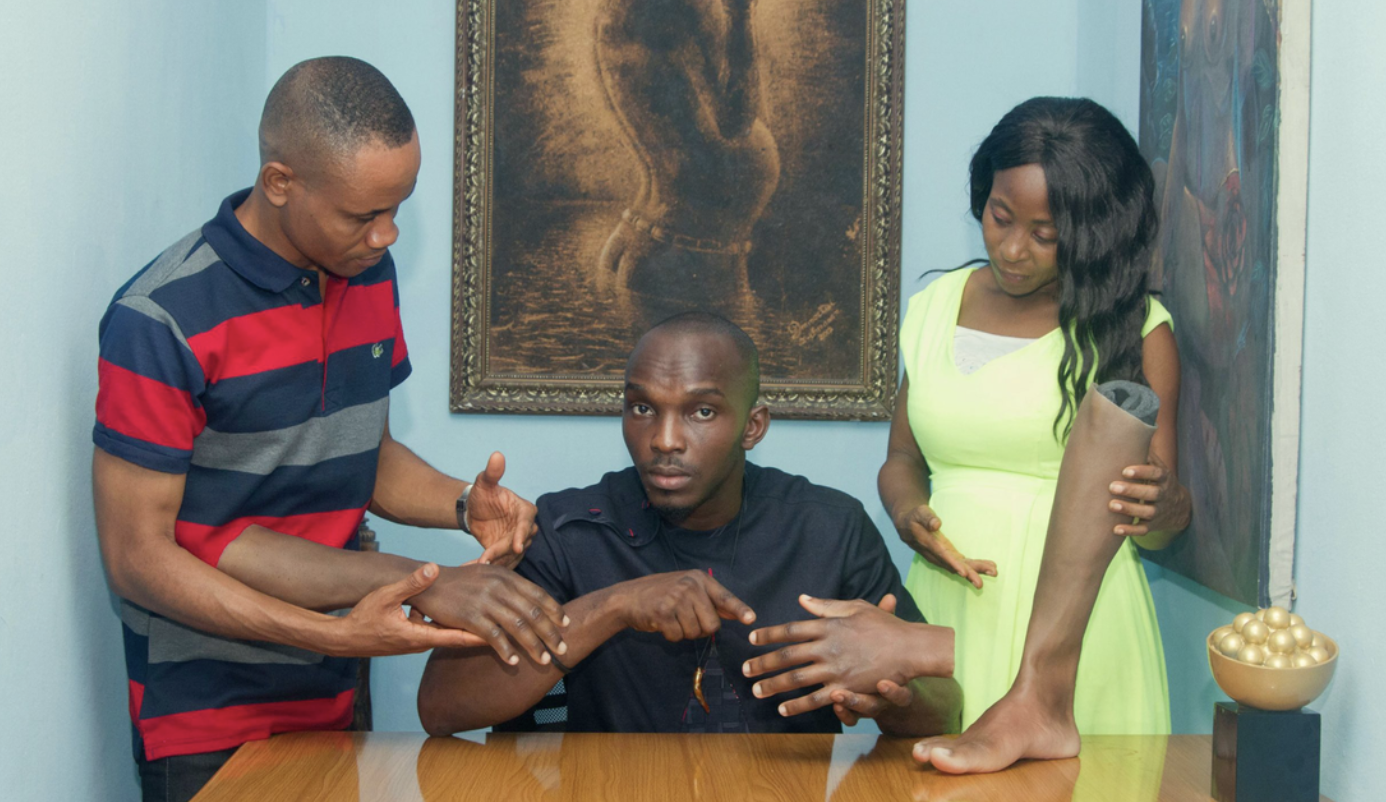
Made to Match: Sculptor gives hyperrealistic prosthetics a new face in Africa
For decades, prosthetic limbs have primarily been available in a single standard design, often limited in shape and typically featuring pale, standardized light tones. But in Akwa Ibom, Nigeria, sculptor and innovator John Amanam is redefining what prosthetics can look and feel like, creating hyper-realistic, melanin-matching limbs that celebrate African identity, one sculpted fingertip at a time.
Meet John Amanam, a hyperrealist sculptor and trailblazer who’s not only creating custom prosthetic limbs that look like the people who wear them, but is also restoring something far deeper: identity, dignity, and a sense of belonging. To him, art is not merely decorative—it is healing.
Through his pioneering work in hyperrealistic prosthetics, Amanam pushes Africa into a new frontier of medical innovation fused with cultural empathy.
“We’re not just making hands and feet, we’re restoring humanity,” says Amanam, with quiet but undeniable conviction.
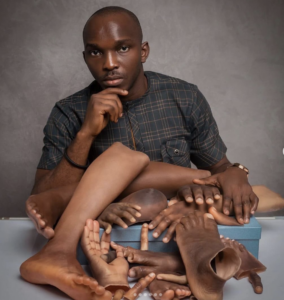
Born from Pain, Driven by Purpose
Amanam’s extraordinary journey into prosthetics was born not in a laboratory or medical facility, but in tragedy. In 2019, his younger brother lost three fingers in a domestic accident. The emotional blow was immense. But the deeper wound came when they sought prosthetic options—and found none that resembled his brother’s rich, dark skin tone.
“My brother looked at one of the options and said, ‘I’d rather go without than wear something that doesn’t look like me.’ “That shattered me. I felt helpless, heartbroken, and angry all at once watching someone I love choose to live with loss rather than feel like a stranger in his skin,” Amanam recalls.
With a degree in Fine and Industrial Arts but no background in medicine or prosthetics, Amanam did what many would have called impossible; he taught himself. He immersed himself in anatomy, materials science, color theory, and pigmentation, experimenting with silicone, dyes, and body molds. He often failed. But each failure only deepened his resolve.
“In 2020, I launched Immortal Cosmetic Art Ltd., now recognized as Africa’s first company dedicated to crafting hyperrealistic, melanin-matching prosthetics. This was my dream company, born out of deep passion and a personal experience that changed everything. Watching what my brother went through pushed me to take action.”
What began as a brotherly act of love has since rippled across borders. Today, John’s work has touched over 5,000 clients in more than 60 countries, from New York to Accra to Amsterdam.
“I Thought It Was Juju!” – One Woman’s Journey Back to Wholeness
The story of Amanam’s impact is best told through the people he has helped.
Emediong Ikpeme, a talented tailor from southern Nigeria, lost her right leg in a tragic road accident.
“I remember that day so clearly. I was heading home from work when I suddenly heard loud brakes. I turned to look back, and it was a truck. The next thing I knew, I was in the air. Then everything went black. I had lost consciousness.”
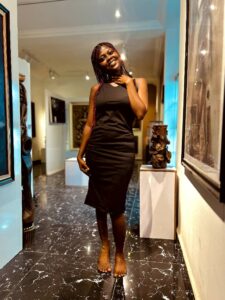
Ikpeme says she stopped going out, stopped sewing, stopped living.
“I felt broken physically and emotionally. My world collapsed.”
Then one day, scrolling through Facebook, she came across an image of a dark-skinned prosthetic hand that looked so real, it stopped her in her tracks.
“Honestly, I thought it was juju! Nigerians, you know how we are! I’d never seen anything like it”, she explains. “I got a lot of support from my family, especially my mom, because I had completely lost hope. Even simple things like using the washroom were hard. I was no longer independent.”
Ikpeme’s dream began to come true when she finally started the process, which involved an interview and working with the team at Immortal Art Cosmetic.
The leg led her to Amanam.
When she wore her custom-made prosthetic for the first time, she broke down in tears.
“It looked exactly like my leg, my own leg. Now I can sew again, wave again. I’m no longer hiding. I feel whole.”
Where Art Meets Science
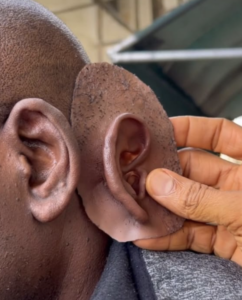
Each prosthetic limb from Immortal Cosmetic Art is crafted by hand, not mass-produced. John and his small team of artists meticulously replicate skin tones, wrinkles, veins, nail beds, birthmarks, and freckles, paying homage to the uniqueness of each client.
“There were no textbooks. No mentors. Just trial and error, a lot of failure, and an unshakable belief that Africans deserve better,” Amanam explains.
Today, his methods are patented, his process protected. He works closely with doctors and biomedical labs to ensure the prosthetics are not only realistic but also safe and functional.
“Most importantly, clients no longer need to travel abroad and pay exorbitant amounts for prosthetics that still don’t match their skin tones. Africa can now serve its own, on its terms. Now, we can find ourselves right here in Africa”, he says.
A Legacy Beyond Limbs
But Amanam’s vision reaches far beyond prosthetics. When he’s not sculpting limbs, he’s in the forests of Akwa Ibom, uncovering ancient cultural artifacts, feeding his passion for history and anthropology.
“The same hands that dig up history are shaping the future,” he says.
His dream is to expand his lab, open a training academy for young African artists, and set up affordable prosthetic hubs across the continent.
“No African amputee should feel invisible again. We exist. We matter. Our features matter.”
The Bigger Picture in Nigeria
John Amanam’s work highlights a growing but often ignored crisis. In Nigeria, amputations—mainly from diabetes, road accidents, and traditional bonesetting—affect mostly young men, yet only 22.4 percent of amputees in Lagos use prosthetics regularly.
Barriers like high costs, stigma, and a shortage of specialists persist.
According to the Prevalence of Amputees in Africa and Global Burden of Disease studies, Africa faces a disproportionate share of disability challenges, worsened by limited access to assistive technologies.
With over 2.4 billion people globally in need of such devices, John’s efforts offer more than limbs—they restore dignity, hope, and belonging.


